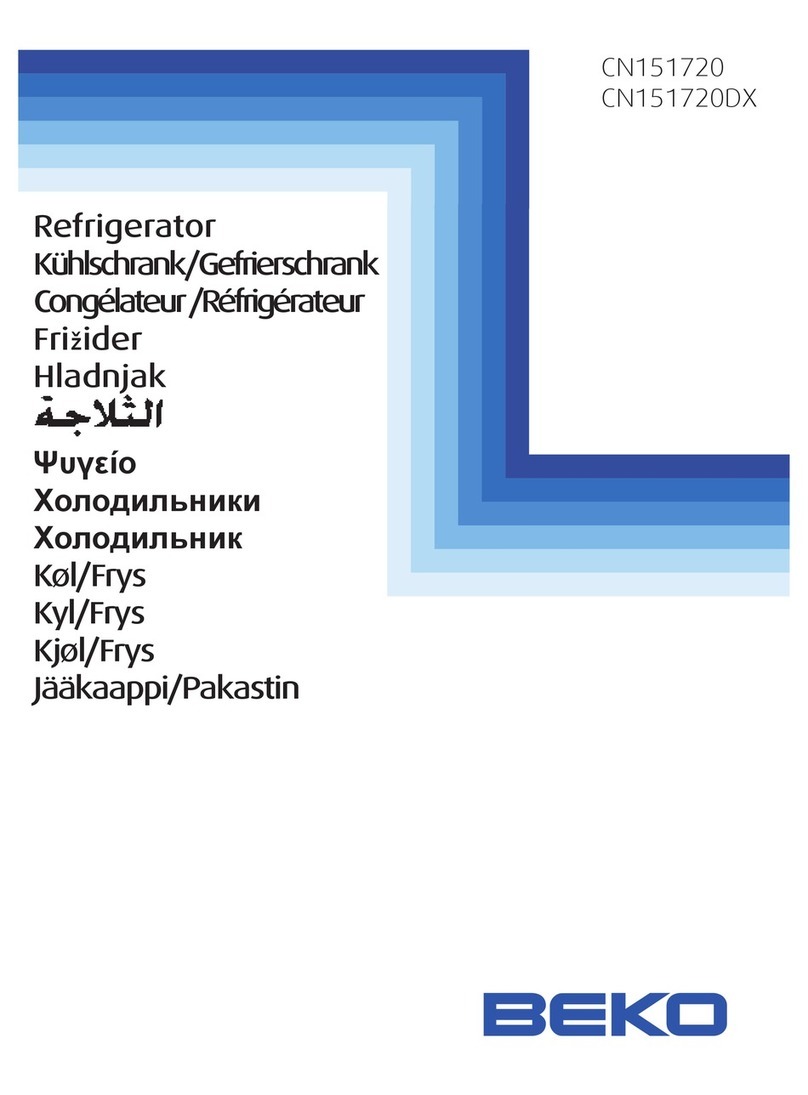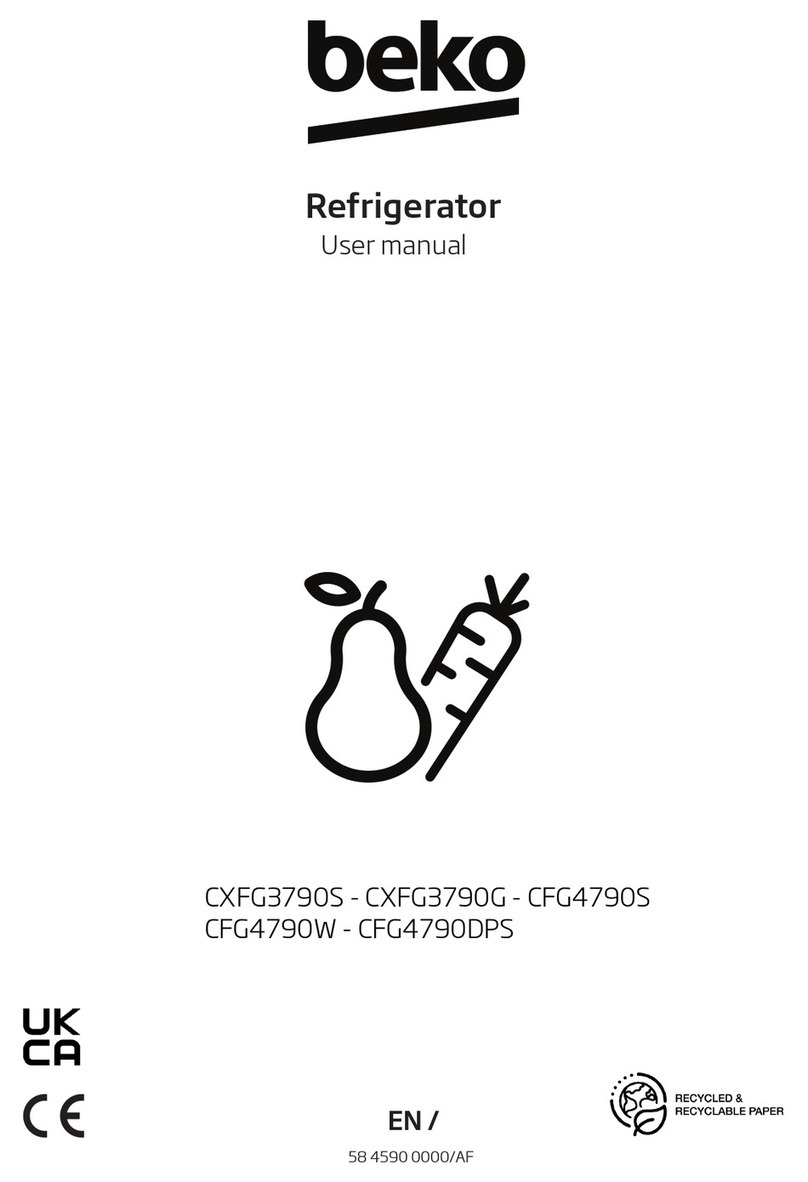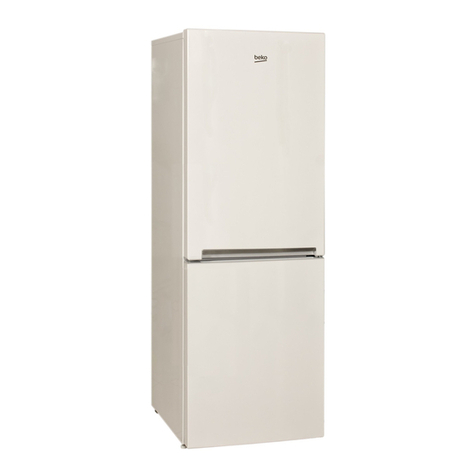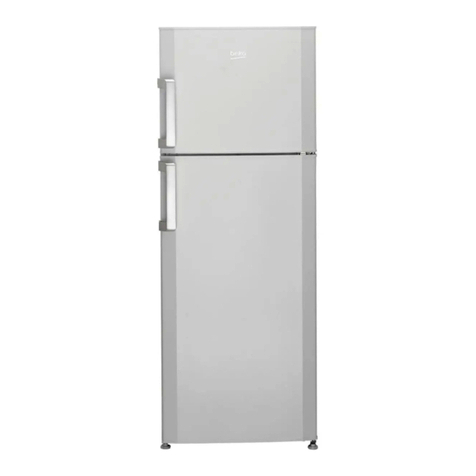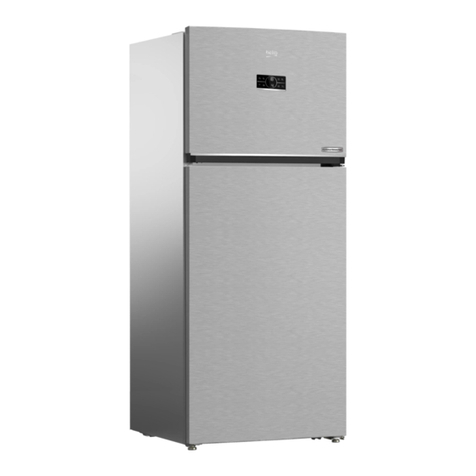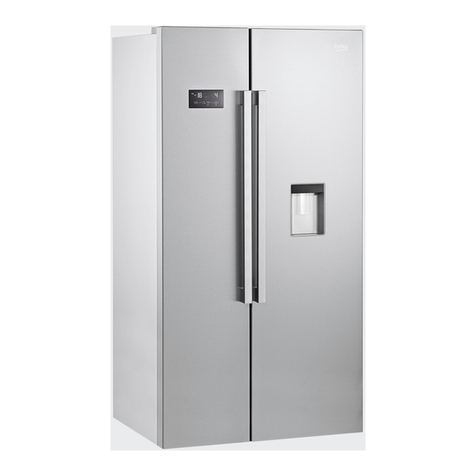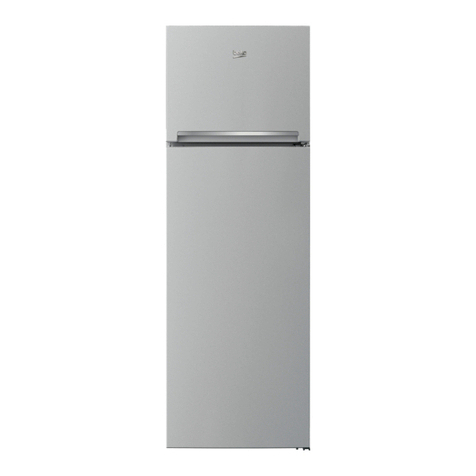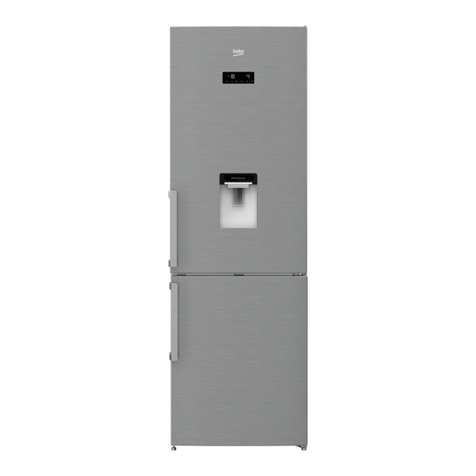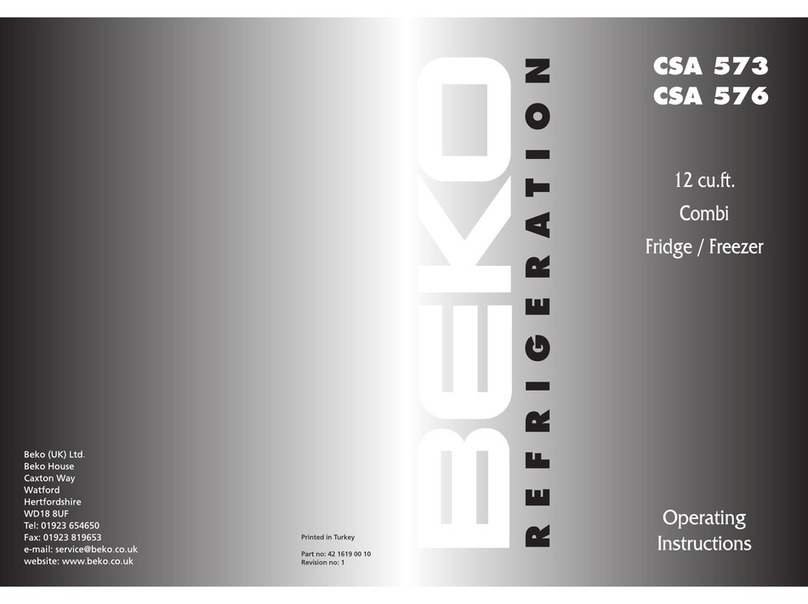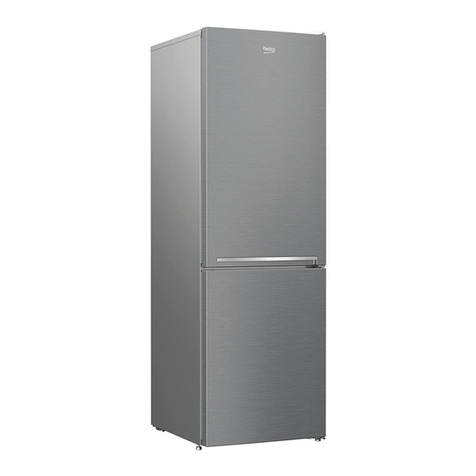
EN
2
1 Your Refrigerator 3
2 Important Safety
Warnings 4
Intended use ..................................... 4
General safety ................................... 5
For products with a .......................... 9
water dispenser; ................................ 9
Child safety........................................ 9
Compliance with WEEE Directive and
Disposing of the Waste Product: ....... 9
Package information........................ 10
HC warning ..................................... 10
Things to be done for energy saving 10
Reccomendations for freshfood
compartment................................... 11
3 Installation 12
Points to be considered when re-
transporting your refrigerator ........... 12
Before operating your refrigerator .... 12
Electric connection .......................... 12
Disposing of the packaging ............. 13
Disposing of your old refrigerator .....13
Placing and Installation .................... 13
Changing the illumination lamp ....... 13
Floor balance adjustment ................14
Adjusting the gap between the upper
door ................................................ 14
Installing Water Filter ....................... 16
Connection of the Water Pipe to the
Refrigerator ..................................... 16
Connection of Water Hose to the
Jug ................................................. 17
Connection of the Water Pipe to the
Cold Water Mains Line .................... 18
Prior to first use of Water Dispenser. 20
CONTENTS
4 Preparation 21
5 Using your refrigerator 22
Indicator Panel................................. 22
Door Open Alarm: .......................... 25
Things to do to have the filter usage
time calculated automatically ........... 26
Sliding Body Shelves ....................... 27
Egg tray........................................... 27
Crisper ............................................ 27
Chiller compartment ........................ 27
Movable Middle Section ................. 28
Multi Zone Storage Compartment .. 28
Blue light ......................................... 28
Sliding Body Shelves With Rear
Hangers .......................................... 29
Butter & Cheese Section ................. 29
Using the water spring..................... 29
Spillage Tray .................................... 29
Minibar ............................................ 30
Dual cooling system: ....................... 31
Freezing fresh food .......................... 31
Recommendations for preservation of
frozen food ...................................... 32
Placing the food .............................. 32
Deep-freeze information .................. 32
6 Maintenance and
cleaning 33
Protection of plastic surfaces ..........33
7 Troubleshooting 34


